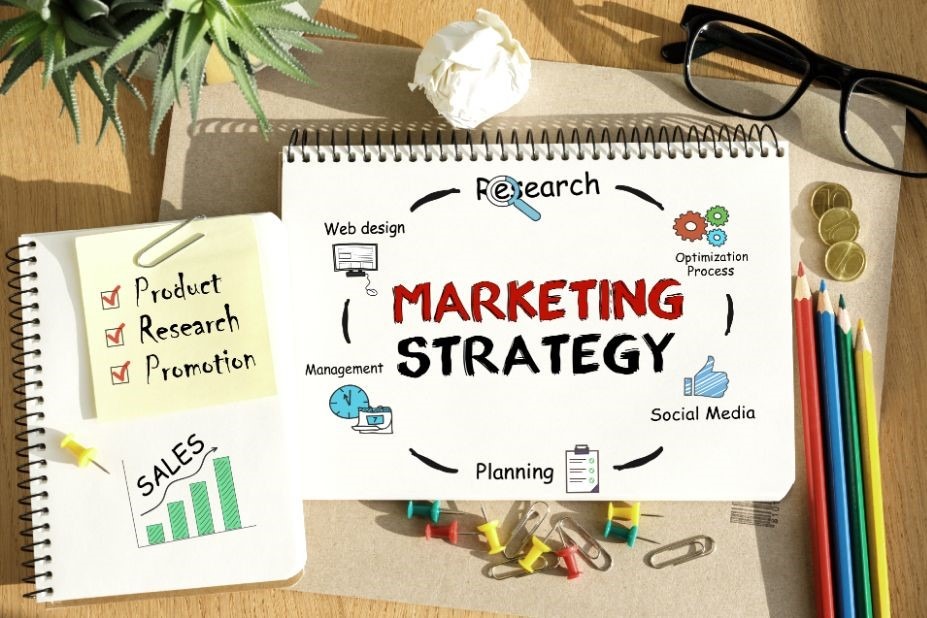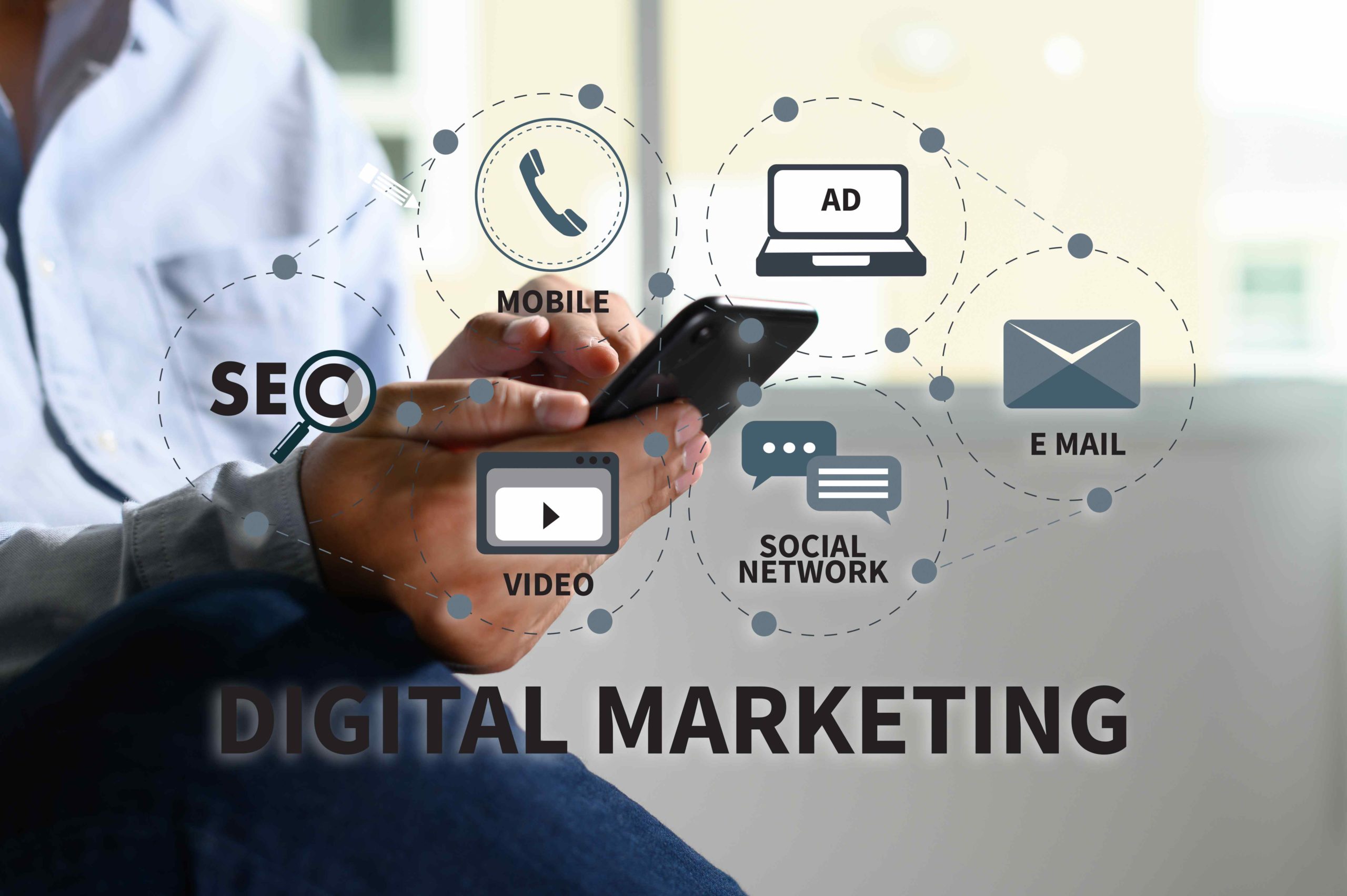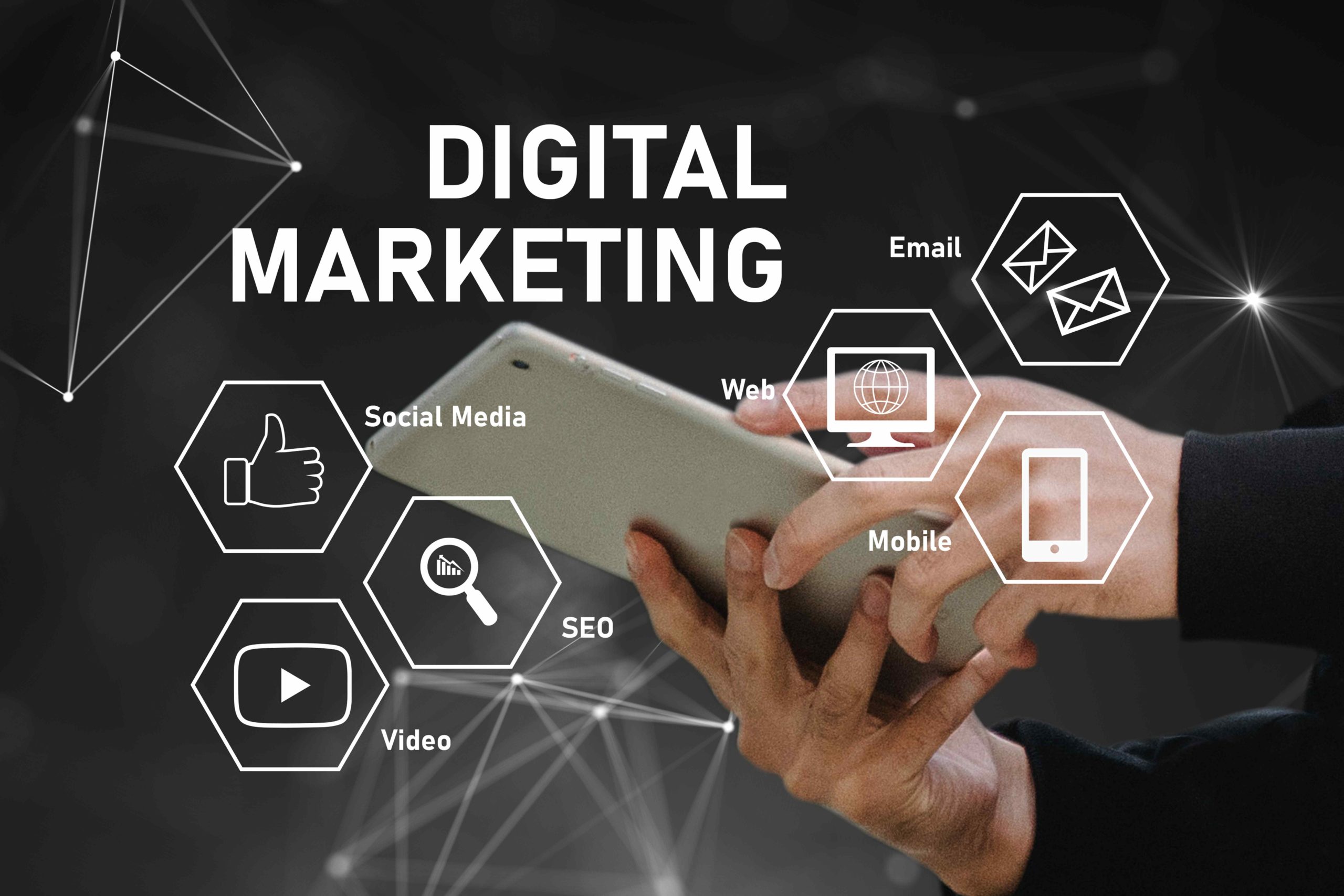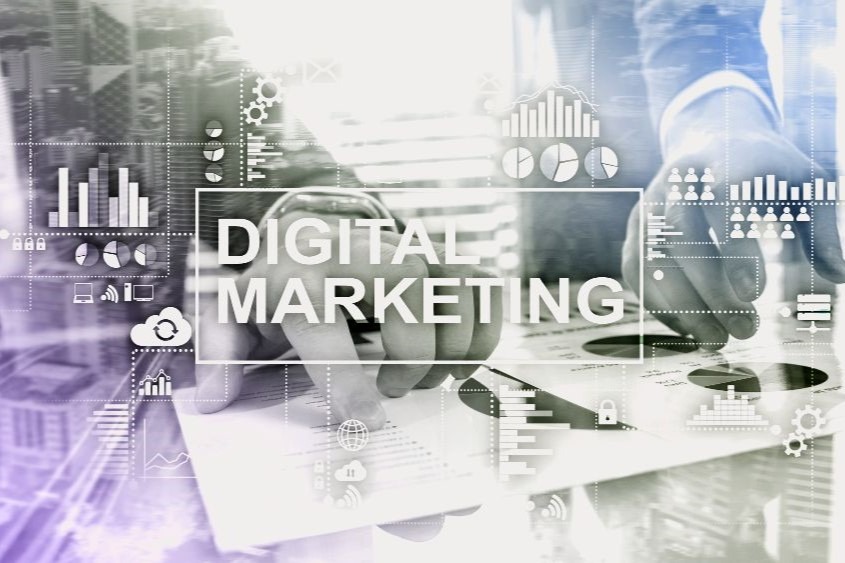
In the digital age, where nearly every aspect of life is intertwined with technology, businesses must adapt to new methods of reaching and engaging their audiences. Digital marketing has appeared as a key strategy for achieving these goals.
But what exactly is digital marketing?
This article explores the fundamentals, benefits, types, and strategies of digital marketing, providing a complete guide for businesses looking to thrive in the digital landscape.
As experts with more than 15 years of experience in Digital Marketing, we are ready to share everything we know.
Key Takeaways
- Digital marketing involves using digital channels and tools to promote products or services.
- It offers numerous benefits, including cost-effectiveness, measurable results, and targeted advertising.
- Types of digital marketing include SEO, content marketing, social media marketing, and more.
- Key performance indicators (KPIs) are crucial for measuring the success of digital marketing efforts.
- Creating a digital marketing strategy involves understanding your audience, setting goals, and selecting the right channels.
What Is Digital Marketing and How it Works?
Digital marketing refers to the use of online platforms and technologies to promote products and services. Unlike traditional marketing, which relies on physical media such as print ads and billboards, digital marketing leverages the internet and digital devices to reach and interact with consumers. It includes a wide range of tactics and strategies, each designed to connect with target audiences in meaningful and measurable ways.
Digital marketing follows traditional marketing principles but operates in the digital space. It leverages consumer data to target specific audiences and deliver tailored messages effectively.
Digital marketing involves understanding the target audience, creating engaging content, using various digital channels, analyzing data to measure performance, and continuously optimizing strategies for better results.
Whether a business is focused on Business-to-Business (B2B) or Business-to-Consumer (B2C) marketing, digital marketing can be tailored to suit different models and objectives, helping to simplify marketing efforts and drive business growth.
What Are the Benefits of Digital Marketing?
Digital marketing is important not only for its ability to reach a wide audience but also for the numerous advantages it offers. These benefits can significantly enhance your marketing efforts.
The key benefits of digital marketing include:
Increased Reach and Visibility
Digital marketing allows businesses to reach a vast global audience, engage with specific demographics, and enhance brand recognition. It enables even small businesses to compete with larger ones by providing cost-effective solutions.
Measurable Results
Through analytics, businesses can track and measure their digital marketing efforts, refining strategies for better ROI. This makes it easier to prove the return on investment compared to traditional marketing.
Targeted Audience Engagement
Digital marketing facilitates personalized engagement through channels like social media, fostering trust and loyalty among customers. Effective targeting techniques like SEO and PPC help create the right marketing strategy for the target audience.
Cost-Effectiveness
Compared to traditional methods, digital marketing is more affordable, with many free options like SEO, social media, and content marketing. Even paid digital channels usually have low startup costs.
Flexibility and Adaptability
Digital marketing allows businesses to respond to changes in real-time, roll out campaigns quickly, and stay relevant to their audience. It provides the ability to scale up efforts to build the brand and increase sales.
Increased Engagement and Loyalty
Digital channels enable two-way communication, allowing businesses to interact directly with customers, cultivate relationships, and promote greater brand interaction. This helps build customer loyalty and trust.
Types of Digital Marketing
There are several key types of digital marketing that businesses can use to reach their target audience and achieve their marketing goals:
Search Engine Optimization (SEO)
Search Engine Optimization (SEO) is a crucial aspect of digital marketing, focusing on improving website visibility and ranking in search engine results. SEO uses various strategies to enhance a website’s quality and quantity of traffic from search engines, considering factors like search engine algorithms, user search behavior, keywords, and audience preferences.
SEO involves optimizing a website’s structure and content to ensure it can be easily found, crawled, indexed, and displayed in search engine results pages (SERPs) for relevant queries.
SEO techniques include keyword research, content marketing, link building, and on-page optimization. These strategies aim to align a website with search engine ranking algorithms, improving its chances of ranking higher in search results and attracting more organic search traffic.
As SEO experts, we have a lot to share about SEO. That’s why we have an SEO knowledge category – you should check it out to learn helpful tips and secret insights.
Content Marketing
Content marketing involves using digital media and content as marketing tools. This can include blog posts, ebooks, whitepapers, newsletters, infographics, and more.
The goal is to increase brand awareness, drive website traffic, and/or generate leads by providing people with high-quality, relevant, and useful information at different stages of their buying process.
Effective content marketing involves:
- Understanding the target audience’s needs and pain points
- Developing a content strategy aligned with business goals
- Creating high-quality, valuable content in various formats like blog posts, videos, infographics, and podcasts
- Distributing content through owned, earned, and paid channels
- Analyzing content performance and continuously optimizing the strategy
Social Media Marketing
Social media marketing involves using social media platforms like Facebook, Instagram, Twitter, and LinkedIn to promote brands, engage with customers, and drive business growth. It includes creating content, interacting with customers through comments, and reflecting a brand’s values and story.
Key aspects of social media marketing include:
- Setting clear goals.
- Researching target audiences.
- Determining social platforms for marketing.
- Establishing metrics and KPIs.
- Understanding competition.
- Creating engaging content.
- Scheduling posts.
- Reviewing and adjusting strategies.
Social media marketing aims to increase brand awareness, generate leads and sales, provide customer care, and build a loyal customer base. It requires a data-driven approach to measure success through metrics like reach, clicks, engagement, follower growth, and conversion rate.
To succeed in social media marketing, businesses should follow best practices like using analytics to measure success, exploring paid social ads, being patient for results, diversifying content, and engaging with followers regularly.
Email Marketing
Email marketing is a form of digital marketing that involves sending promotional messages or newsletters to a list of subscribers via email. The goal is to build customer relationships, promote products or services, increase brand awareness, and ultimately drive sales.
Email marketing allows for direct communication with the target audience, offering personalized and relevant content that can be tailored to specific demographics. It is a cost-effective and measurable marketing channel, providing valuable data for analyzing campaign success.
You can learn more about Email Marketing in our article How to Do Email Marketing in SEO.
Affiliate Marketing
Affiliate marketing is a performance-based marketing arrangement where a company compensates third-party publishers (affiliates) for generating traffic, leads, or sales to the company’s products or services. The affiliate earns a commission for each sale or action generated through their unique affiliate link or referral code.
The main types of affiliate websites include search affiliates, content affiliates, and email affiliates. Affiliate marketing is a low-cost way to start a business, with easy execution, low investment, and the ability to scale. However, it takes time to grow an audience and gain influence.
Learn more in our article: How to Do SEO for Affiliate Marketing: A Comprehensive Guide
Influencer Marketing
Influencer marketing is a form of social media marketing in which popular social media users partner with brands to promote products or services.
Influencers are individuals or organizations that can influence others’ purchasing decisions by creating original, often sponsored content on platforms like Instagram, YouTube, Snapchat, TikTok, and other online channels.
Audio and Video Marketing
Audio and video marketing involves creating and sharing engaging and informative audio or video content to promote your business and build connections with your customers. This can include sharing entertaining, educational, or promotional clips on your website or social media platforms with the goal of reaching and engaging your target audience naturally.
Podcasting is the most popular form of audio marketing, allowing brands to distribute stories, insights, and how-to guidance via platforms such as Spotify, Google Podcasts, and Acast.
SMS Marketing
SMS marketing, also known as short message service marketing, is a direct marketing strategy that involves sending promotional offers, updates, and news to customers via text messages. It is a cost-effective and efficient way to communicate with customers due to its speed and positive reception.
SMS marketing allows businesses to share promotions, reminders, time-sensitive updates, personalized discounts, and order delivery updates directly to customers’ mobile phones. This form of marketing is highly effective in increasing brand awareness, boosting engagement, and generating more sales.
SMS marketing offers a direct and immediate channel to reach customers with timely notifications and offers, making it a powerful tool for driving conversions, increasing customer loyalty, and strengthening relationships with the brand.
Mobile Marketing
Businesses use mobile marketing to connect with customers through smartphones and tablets. They create and deliver messages, ads, and content specifically designed for smaller screens and the mobile experience.
Mobile marketing includes push notifications (from websites and apps), mobile-optimized website and email content, mobile apps, and location-based marketing.
Mobile marketing provides a direct and personal channel as many people regularly check their devices. This means they are more likely to consume mobile marketing content compared to walking past a billboard or hearing a radio ad.
Pay-Per-Click Advertising (PPC)
Pay-Per-Click (PPC) advertising is a digital marketing model where advertisers pay publishers, such as Google or Facebook, a fee each time someone clicks on their ad. This form of marketing is considered cost-effective and yields a good return on investment since businesses only pay when a user interacts with their ad.
They can appear in various formats, such as text ads, visual banners, product listings, and videos, making PPC a versatile form of social and search engine marketing (SEM).
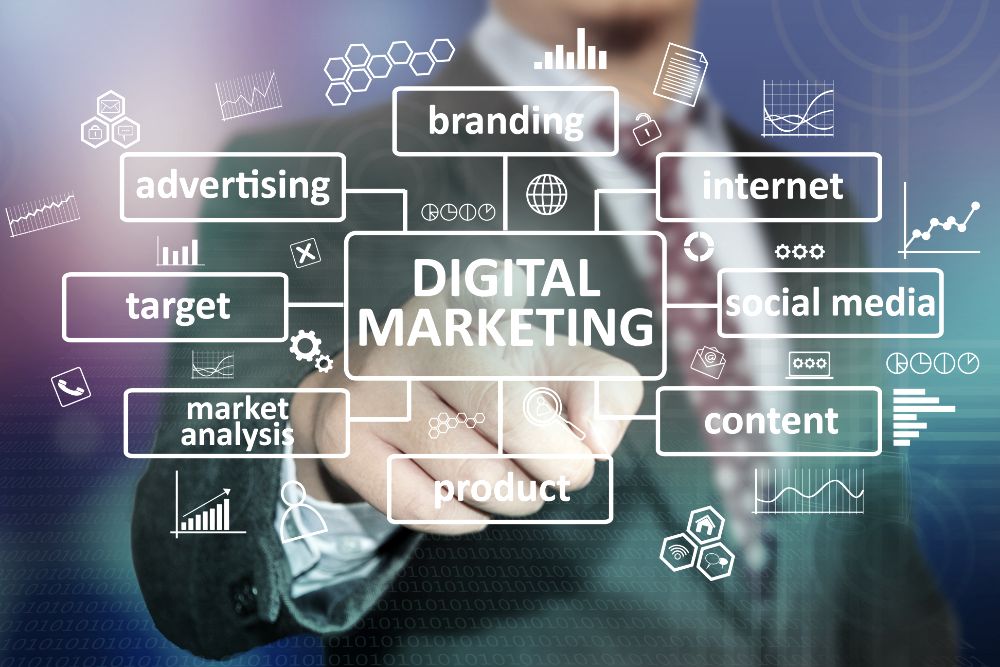
B2B vs B2C Marketing: What is the Difference
B2B (business-to-business) and B2C (business-to-consumer) marketing refer to the two main types of marketing strategies based on the target audience.
The main differences between B2B and B2C marketing are:
- Target: B2B marketing focuses on promoting products or services to other businesses, with the goal of generating leads and driving sales. B2C marketing targets individual consumers, aiming to create emotional connections and drive quick transactions.
- Customer Relationships: B2B marketing focuses on building long-term personal relationships, while B2C marketing tends to be more transactional.
- Content and Formats: B2B content is more informative, using tools like webinars, research reports, ebooks, and infographics to help with the decision-making process. B2C content is more playful and entertaining, using formats like blog posts and social media to engage consumers.
- Buying Cycles: B2B has longer buying cycles with multiple stakeholders, so the flywheel model of content feeding into itself is more effective. B2C has shorter buying cycles focused on the individual, so the funnel model is more common.
In summary, B2B marketing is more focused on building relationships, giving expertise, and using informative content to influence professional buyers, while B2C marketing aims to build emotional connections, entertain consumers, and drive quick transactions through pricing and promotions.
Key Performance Indicators (KPIs) in Digital Marketing
Key Performance Indicators (KPIs) are essential metrics used in digital marketing to measure the success and effectiveness of marketing strategies, campaigns, and channels. KPIs help digital marketers track progress towards specific goals, make data-driven decisions, and optimize their efforts for better results.
Some of the most important digital marketing KPIs include:
Website Metrics
- Website Traffic: Measures the total number of visitors to a website, providing an overview of reach and audience size
- Bounce Rate: Calculates the percentage of single-page visits, indicating engagement levels
- Average Session Duration: Measures the average time spent by visitors on a website, showing content relevance
Search Engine Optimization (SEO) Metrics
- Organic Traffic: Tracks the number of visitors arriving through unpaid search results, indicating search visibility
- Keyword Rankings: Measures a website’s position in search results for specific keywords, impacting organic traffic
- Backlinks: Counts the number and quality of external websites linking to a site, improving credibility. If you are curious about whether you should buy backlinks, read this article.
Social Media Metrics
- Followers: Tracks the growth of a brand’s social media following, demonstrating reach
- Engagement Rate: Measures interactions like likes, comments, and shares, indicating content effectiveness
- Click-Through Rate (CTR): Calculates the percentage of users who click on a link or ad, showing ad relevance
Content Marketing Metrics
- Unique Visitors: Tracks the number of individual visitors to a website, measuring content reach
- Time on Page: Measures the average time spent on a page, indicating content quality and relevance
- Lead Generation: Tracks the number of leads generated through content, demonstrating its effectiveness
Email Marketing Metrics
- Open Rate: Measures the percentage of recipients who open an email, showing subject line effectiveness
- Click-Through Rate: Calculates the percentage of recipients who click on a link in an email, indicating content relevance
- Unsubscribe Rate: Tracks the percentage of recipients who opt out of an email list, highlighting content quality
By consistently tracking and analyzing these KPIs, digital marketers can make informed decisions, optimize their strategies, and achieve their marketing goals more effectively.
How to Create a Digital Marketing Strategy
No two digital marketing campaigns are the same. There are many approaches and tactics to consider, and it’s up to you to choose how much you invest in them.
That said, most digital marketing strategies tend to follow similar planning and deployment processes. Here’s how to build one:
Set Your Marketing Goals
A digital marketing strategy goal serves as the primary objective for your marketing team or campaign, aligning with and contributing to broader business goals. Having a well-defined goal is crucial for guiding your digital marketing strategy, enabling you to maintain focus, recognize shortcomings, and celebrate achievements effectively.
Identify Your Target Audience
Your target audience is the group of people who are most likely to be interested in and benefit from your products or services. They have common characteristics, needs, and preferences, making them the main focus for your marketing messages.
It’s important to analyze your audience to ensure that your digital marketing efforts effectively resonate with them. Research should focus on the demographic makeup, purchasing behaviors, and content preferences of your audience.
Understanding your target audience influences your campaign strategy and success, determining which channels to use and how to position your content.
Creating ideal customer profiles (ICPs) can help with this process. An ICP outlines the perfect buyer for your business, detailing their characteristics, interests, needs, and behaviors. With this insight, you’ll better understand your target market’s mindset, guiding your marketing plan and strategic decisions.
Choose Marketing Channels
It’s important to focus on the marketing channels that make sense for your business. Using multiple channels can help boost your results by reaching more people in more places. This is known as multichannel or omnichannel marketing. Consider your marketing goals, target audience, and budget when deciding which combination of channels works best for you. Ultimately, it’s important to be present where your ideal customers are. Keep in mind that you can always adjust your chosen channels as digital marketing is adaptable by nature.
Set Your Budget
The amount of money a business spends on online marketing is called a digital marketing budget.
Understanding your overall business objectives is the first step. Are you trying to increase brand awareness, close more sales, or nurture existing customers? Your goals will influence your strategy and determine how much you need to spend.
One common method is to allocate a percentage of your revenue to marketing. The percentage varies depending on factors like industry, company size, and growth stage, but typically falls between 5% and 15%.
Another way to get an idea of your budget is to research industry benchmarks to understand what your competitors spend on digital marketing. While this shouldn’t be your sole basis for your budget, it provides useful context.
It’s important to break your budget into campaigns, as some channels, such as social media ads, require more up-front spending than others, like SEO content creation.
You should also account for variable costs. For example, if a performance-based influencer marketing campaign does better than expected, you’ll still need to pay your collaborators.
Lastly, investing in marketing analytics tools is crucial to using your budget wisely. Regularly monitoring your digital marketing key performance indicators (KPIs) will help you focus on the most effective tactics and ditch those that don’t work.
Create and Share Content
Once you understand your goals, target audience, and marketing channels, you can start creating content that fits your strategy. This might include blog posts, social media updates, PPC ads, newsletters, and more.
To make sure your content effectively supports your campaign, consider the following:
- What content your competitors have and how well it works
- How well your content meets your audience’s needs
- Whether your content matches your brand’s image and tone of voice
- All your content should aim to engage or educate your target audience.
It’s also important to think about how your content connects. Ideally, you can create groups of related topics where one piece leads to another. This can keep users engaged and help them remember your brand.
These groups of topics also show your expertise to readers and search engines. Search engines like Google will understand how your content is related by creating “pillar pages” and linking content to and from them.
Analyze Results and Improve Your Strategy
After creating your content, deploy your campaign and start monitoring results. Analyze your performance data using tools like Google Analytics and Google Search Console. Then, adjust your marketing tactics based on what you learn.
Over time, this continuous refinement will result in highly-tuned campaigns that consistently deliver positive results.
Conclusion
Digital marketing is a powerful tool for businesses to connect with their audience, drive sales, and build brand loyalty. By understanding its various components and strategies, businesses can effectively navigate the digital landscape and achieve their marketing goals.



